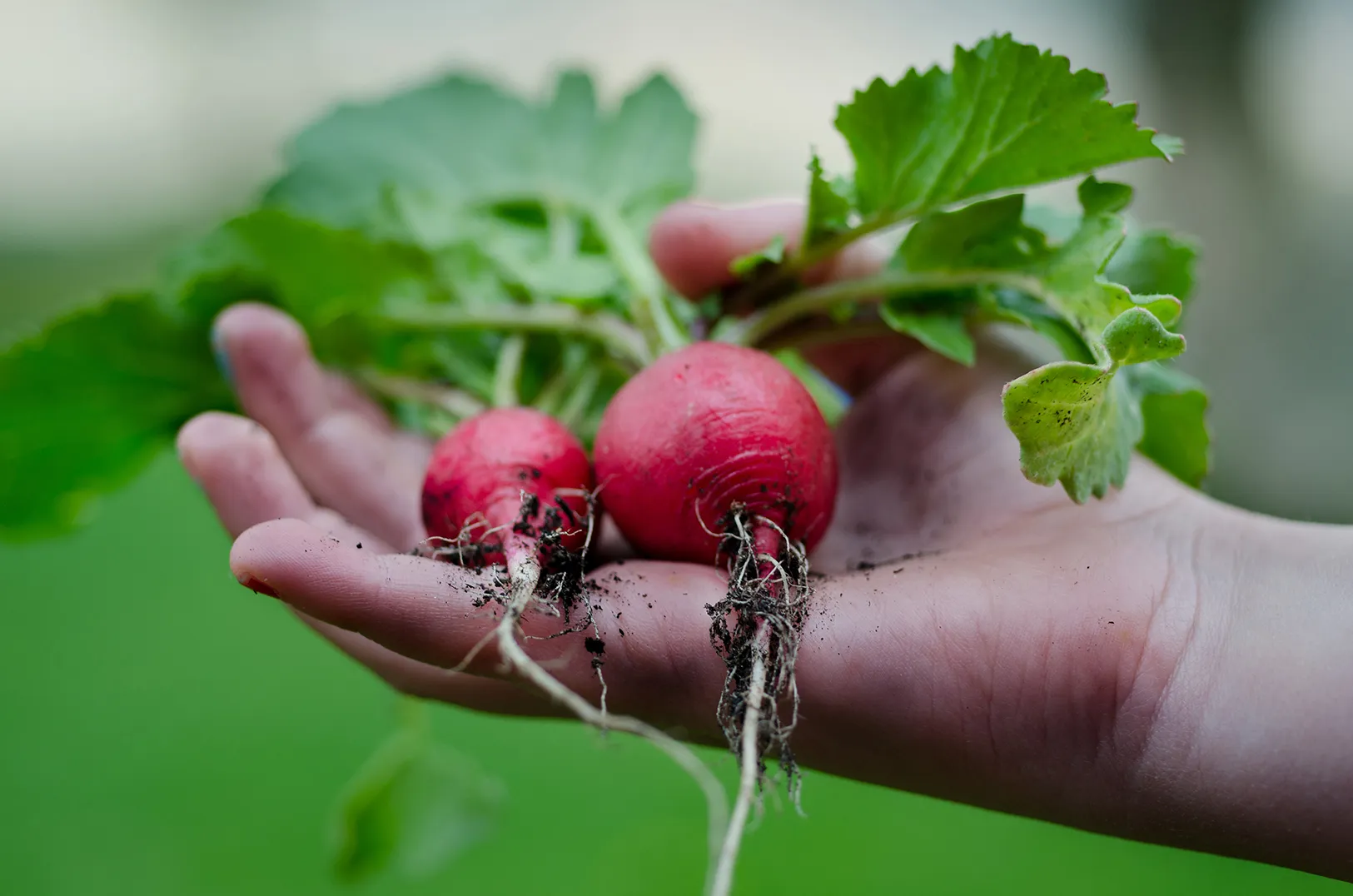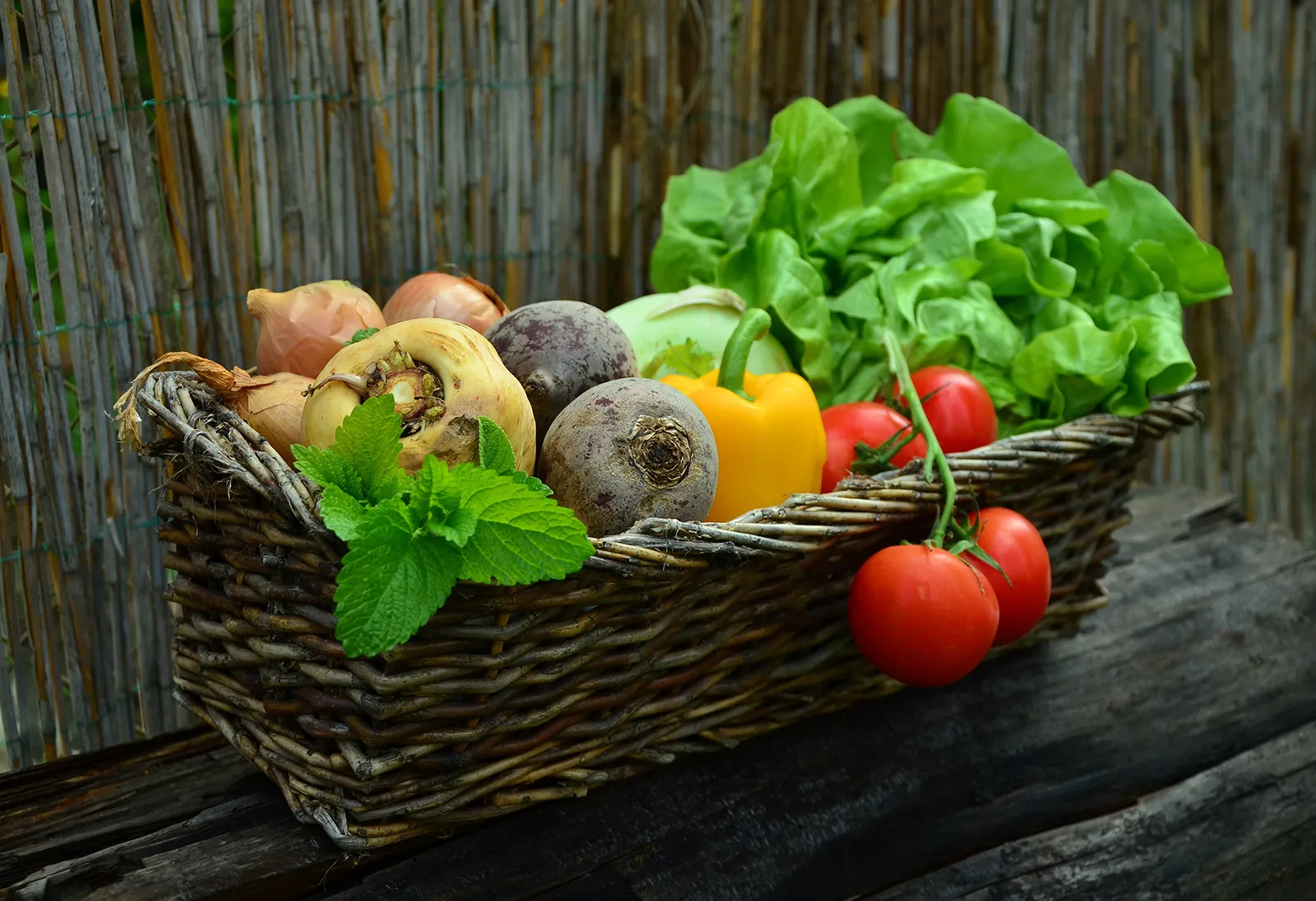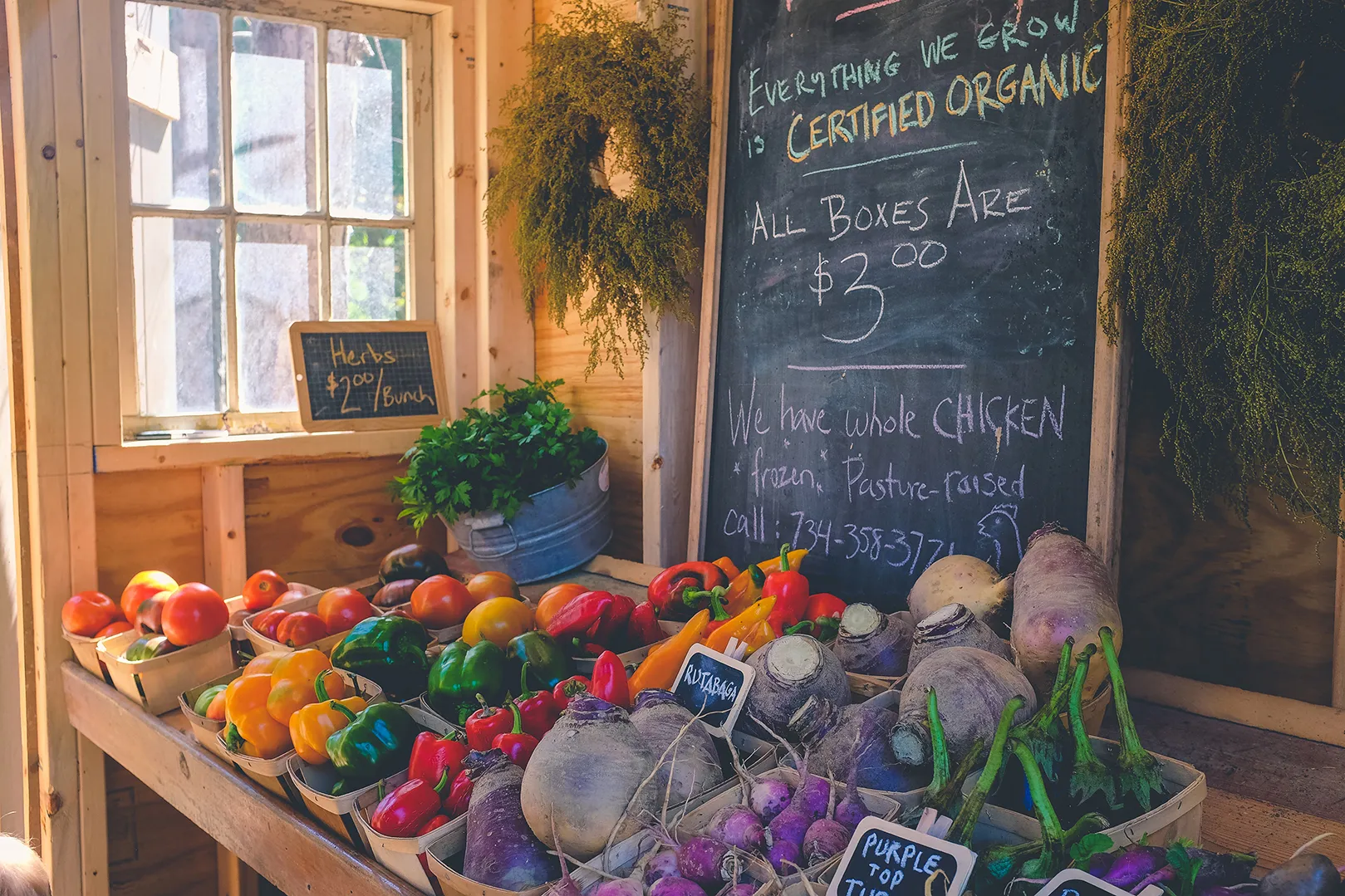Post-Harvest Handling Basics
The most beautiful, deep-green, aphid-free kale can make your heart sing while harvesting it in the
field and just as quickly make your heart break as you unpack wilty, rubbery bunches onto your
farmers market table. Produce goes through a bit of shock in its transition from field to market,
and proper post-harvest handling can either ease or worsen that shock. If building a $20,000 packing
shed isn't in your immediate farm plans, here are the basics of all you really need to move produce
from your field to your customer in good condition.
1) Get Vegetables at Their Coolest
Getting a jump on the sun is not just for our comfort—it’s for the plants, too.
According to Clemson
Cooperative Extension, “overnight, vegetables regain moisture that they lost during the day, and
starches formed during the day may be converted to sugars during the evening. These traits make
morning-harvested produce crisper, juicier and sweeter.”
Start your harvest routine early in the day with the most delicate produce: usually herbs and
greens. Broccoli and asparagus, too, are more delicate than many realize. Although root vegetables
are less prone to dehydrating in the field, under the hot sun their greens are affected. Tomatoes
and winter squash are less affected by the heat.

2) Remove Field Heat as Soon as Possible
As you harvest, keep produce out of the sun. You may place harvest crates in the shade of your
vehicle or under a pop-up canopy until you can get the vegetables back to your packing area for
further cooling. Use caution when leaving your harvest crates under trees—here, they are
particularly susceptible to bird droppings, which would render your whole harvest unusable.
Back in your packing area, use water baths, hoses and fans for cooling and cleaning. As your
operation grows and you look at getting a post-harvest food-safety certification, such as USDA Good
Agricultural Practices, you’ll need to worry about using sanitizer in your wash water, having a
three-part dunk-tank system and much more. (That is also where your $20,000 packing shed will come
in.) For now, know that your dunk tanks need to be scrubbed clean and your wash water needs to be
changed when it gets dirty. Changing your wash water often will keep down the temperature of the
water, too, expediting the cooling of your product.
You don’t want to wash your tomatoes, cabbage, some herbs (sage and basil immediately come to
mind), berries, garlic, and onions, because their quality deteriorates soon after getting wet.
Some items do best cooled in a dunk tank: greens, green beans, peas and some herbs (such as
parsley, cilantro and dill). While on the topic of herbs, make sure that pungent herbs are washed
last as they will impart their smell (and oils) on the wash water and subsequent produce washed in
there -- so plan for herbs to go last.
Use caution with cucumbers, peppers and celery: these items imbibe the water, meaning when you
submerge them, they uptake some of the water. This is especially an issue with water that could be
carrying pathogens (washed off from other items, for example) and with water that is more than 10
degrees F colder than the produce.
Hosing off dirty vegetables is also an option. Root vegetables, especially, benefit from spraying
with a hose. Use caution when spraying the roots’ greens so as to not damage them, and go easy on
root veggies with more delicate skin, such as new potatoes and uncured sweet potatoes. Let produce
dry a bit or shake off excess water before packing.

3) Continue to Keep Produce Cool
Now that your produce is in from the field and cooled, keeping it that way is challenging without a
walk-in cooler. Try to time your harvest so your vegetables don’t have to wait around for too long
before reaching their market. Store vegetables in waxed cardboard boxes in a cool place, like a
basement or root cellar. The waxing on the box allows you to add cold ice and water and helps hold
in moisture while insulating from warm outside air and breezes although some farms have been trying
out alternatives to waxed cardboard boxes in the past few years to try and cut down on waste. Pour
ice over particularly sensitive items, like broccoli, lettuce, asparagus and greens. Place wet paper
or paper towels over the top layer of produce in a box to keep the box’s contents from drying.
Keep produce away from breezes, too, as even a cool breeze will turn greens to rubber.
Transport your produce in a refrigerated—or at least air conditioned—vehicle. Put a layer of
insulation between the vehicle floor and the produce boxes. You’ll be surprised how much road heat
can be transferred through the floor. A layer of cardboard or styrofoam will do, if you’re not able
to install a raised floor. Throw a clean blanket over produce boxes to keep the sun off of them in a
vehicle with windows.
4) Display Produce Well
Go to market prepared to maintain a tolerable atmosphere for your wares so you don’t have to watch
your lettuce wilt away.
Display broccoli, lettuce and asparagus packed in ice on hot days. Display your herbs in jars of
water. Maybe even put some bunches of greens in jars of water. Put just a few items of each
available variety on display so the others can be kept in coolers, protected from heat, sun and
wind. Put up your tent sides to keep the breeze away from greens. Regularly spray greens with cold
water from a spray bottle to keep them from drying out. And, of course, rearrange your table display
as the sun and shade rotate through your booth so sensitive greens stay out of the sun and the
unphased tomatoes, garlic and winter squash take the brunt of the sun’s rays.
Talk to customers about the challenges of keeping produce cool and let them know how to handle
their items so your produce will remain as fresh and delicious as possible until they’re able to use
it.

Conclusion
As your farm grows and you expand your markets, you may consider doing a Wholesale Success Training
with Family
Farmed or, at the least, getting a copy of their Wholesale Success, a comprehensive manual
for food safety, post-harvest handling and produce packing. (The author of this blog entry has worn
out her copy of Wholesale Success over the years.)
Keep notes on how your produce fares from harvest to market table. You may find some varieties hold
up better than others. Talk with fellow farmers and pay attention to how other vendors are storing
and displaying their vegetables at market, too.
Planting, cultivating and worrying over your crops is just one part of being a market farmer. Much
of the work and worry comes at the moment of harvest, right up until your produce is sold.
If you liked this article, and want to see more like it, enter your email in the subscribe box to the top-right of this page and we'll send you new blog articles as we publish them.

Freelance writer Lisa Munniksma grows herbs, manages a small organic-foods specialty
store, and writes about food and agriculture. She has traveled and worked on farms all
over the world, but her favorite farms and farmers markets are in Kentucky.
Photo Credit: Karen Lanier